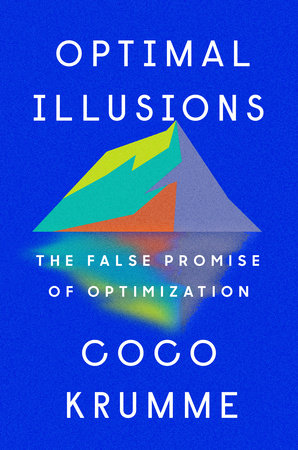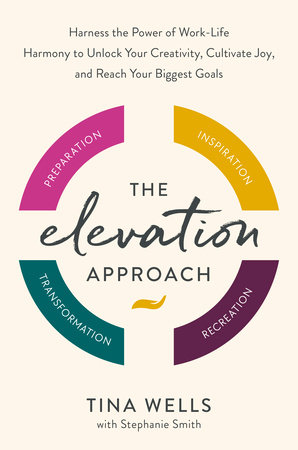Quick Summary
One Sentence Summary
“The 9 Steps to Financial Freedom” by Suze Orman offers a holistic approach to managing personal finances, combining practical advice with psychological insights.
Big Idea
The core message of the book is that true financial freedom is more about understanding your emotional relationship with money than merely accumulating wealth.
Five Key Ideas
- Understanding Your Money Story: Exploring past experiences that shape current financial behaviors.
- Facing Fears and Creating New Truths: Overcoming fears related to money and replacing them with empowering beliefs.
- Being Honest with Money: The importance of financial integrity in achieving freedom.
- Being Responsible to Those You Love: Balancing personal financial health with responsibilities to loved ones.
- Being Respectful of Yourself and Your Money: Cultivating self-respect through smart money management.
Actionable Advice
- Conduct a financial self-assessment to understand your current situation.
- Create a manageable budget and savings plan.
- Prioritize debt repayment and emergency funds.
- Invest in insurance and retirement plans.
About the Author
Suze Orman is a financial advisor, author, and television personality known for her straightforward and empathetic approach to personal finance.
Read Next
For deeper dives into personal finance, consider:
- “Rich Dad Poor Dad” by Robert Kiyosaki for understanding assets and liabilities.
- “Your Money or Your Life” by Vicki Robin and Joe Dominguez for a values-based approach to money management.
- “The Total Money Makeover” by Dave Ramsey for practical steps to get out of debt and build wealth.
In Depth
Understanding Your Money Story
The Roots of Your Financial Behavior
Our financial behaviors and attitudes aren’t born in a vacuum. They stem from our past experiences, particularly those from our childhood. In “The 9 Steps to Financial Freedom,” Suze Orman delves deeply into the concept of a ‘money story.’ This story is essentially the narrative we’ve crafted, often subconsciously, about money based on our early experiences and observations. Orman emphasizes that understanding this story is pivotal in reshaping our financial future.
Let’s break this down using a detailed example from the book. Orman shares a story of a woman who, as a child, observed her parents arguing about money. This experience led her to associate money with conflict and stress. As an adult, she found herself avoiding financial decisions and discussions, impacting her financial health negatively. This woman’s money story was clearly rooted in her childhood experiences, dictating her financial behavior as an adult.
Orman stresses that we all have such stories. They may not be as dramatic, but they’re influential nonetheless. She writes, “Every financial move you make might be a fight against hidden anxieties or unfulfilled wishes, against deep-seated notions about what money can and cannot do for you.” This quote highlights the undercurrents that our money stories can create in our financial lives.
In my experiences interacting with people about their finances, I’ve noticed how often their current financial habits reflect their past. For example, someone who grew up in a household where money was always tight might become an excessive saver, always fearing a lack of funds. Alternatively, they might swing to the other extreme, spending recklessly because they never want to feel deprived again.
Orman’s approach is not just about identifying these stories; it’s about confronting and rewriting them. It’s about understanding that our past doesn’t have to dictate our financial future. This involves introspection and sometimes, a bit of emotional digging. It’s not always comfortable, but it’s necessary.
Recognizing and acknowledging the origins of our financial beliefs can be a powerful first step in changing them. The process involves asking oneself questions like, “Why do I feel anxious when thinking about investing?” or “What’s the root of my reluctance to budget?” Answers to these questions often lead back to early experiences or messages we received about money.
Ultimately, understanding your money story is about gaining control. It’s about moving from being an unknowing actor in an old script to becoming the scriptwriter of your own financial life. It’s not just about numbers and budgets; it’s about rewriting narratives and, in turn, reshaping behaviors. This is what sets the foundation for true financial freedom, as Orman eloquently guides her readers to realize.
Facing Fears and Creating New Truths
Overcoming Financial Fears
Fear often sits at the heart of our financial decisions, whether we realize it or not. In her book, Suze Orman encourages readers to confront their financial fears head-on. She believes that by facing these fears, individuals can replace them with empowering beliefs and truths. This shift is critical for achieving financial freedom.
A compelling example from the book involves a man who was terrified of investing. His fear stemmed from an early experience where he lost a small amount of money in the stock market. This fear had paralyzed him, keeping his savings in low-yield accounts. Orman’s advice to him and others is clear: understand your fear, face it, and then reframe it.
Orman writes, “Fear, like any other emotion, is just a feeling that can be changed. You change it by facing it, understanding it, and finally taking action against it.” This quote underscores the transformative power of confronting and understanding one’s financial fears.
I’ve witnessed similar scenarios in real life. People often avoid certain financial actions, like investing or budgeting, out of fear. These fears might be of losing money, not understanding the process, or even fear of success and the responsibilities that come with it. Whatever the fear, it usually serves as an invisible barrier, preventing them from achieving their financial potential.
Orman’s approach involves a three-step process: identifying the fear, understanding its origins, and then taking concrete steps to address it. For the man afraid of investing, this meant educating himself about the stock market, understanding the risks and rewards, and then starting with a small, manageable investment.
It’s essential to recognize that these fears don’t disappear overnight. Facing them is an ongoing process. It requires persistence and sometimes a shift in mindset. Orman encourages her readers to replace old, fear-based beliefs with new, empowering truths. This might mean replacing the belief that “Investing is always risky and I will lose money” with “Investing can be managed wisely to grow my wealth over time.”
Creating new truths is not about denying risks or painting an unrealistically rosy picture. It’s about having a balanced, informed perspective. It’s about understanding that while there are risks, there are also strategies to manage them. It’s about replacing fear with knowledge, and then using that knowledge to make informed financial decisions.
In essence, facing fears and creating new truths is about shifting from a place of fear to a place of empowerment. It’s a crucial step in the journey towards financial freedom, as it lays the groundwork for making financial decisions with confidence and clarity. This key idea, as Orman skillfully articulates, is not just about money; it’s about conquering the fears that hold us back in various aspects of our lives.
Being Honest with Money
Financial Integrity Matters
Honesty in financial matters is a central theme in Suze Orman’s book. She emphasizes that being truthful about money, both with yourself and others, is a cornerstone of financial freedom. This honesty involves acknowledging your real financial situation, adhering to your budget, and being transparent in financial dealings.
A striking example from the book is about a couple who hid their spending habits from each other. Each partner had secret credit cards, leading to a pile of hidden debt. This lack of honesty not only strained their finances but also their relationship. Orman’s advice to them was straightforward but profound: come clean about your finances. She believes that financial honesty is a foundation for both financial health and healthy relationships.
Orman states, “When you are financially honest, you don’t allow your money to control you; you are in control of your money.” This quote highlights the power shift that occurs when you embrace financial honesty. You move from being at the mercy of your financial circumstances to being in charge of them.
In my observations, financial dishonesty, especially self-deception, is surprisingly common. People often avoid looking at their bank statements, ignore mounting debts, or convince themselves that their reckless spending is justifiable. This self-deception creates a financial fog, where making informed and rational decisions becomes nearly impossible.
Orman’s emphasis on honesty extends beyond self-deception. It’s also about being honest in our financial dealings with others. This could mean being transparent about your financial limitations when planning a group trip, or being upfront about your salary expectations during job negotiations.
The path to financial honesty involves regular self-check-ins. It’s about regularly reviewing your finances, setting realistic budgets, and sticking to them. It’s also about having honest financial conversations with partners, family, or financial advisors.
Confronting the truth about one’s financial situation can be daunting. It might reveal uncomfortable truths or necessitate tough decisions. But Orman argues that this honesty paves the way for genuine financial improvement. It’s about facing the reality of your situation, then taking informed steps to change it.
Being honest with money is more than just a practical strategy; it’s a value. It’s about building a relationship with money that’s based on clarity, transparency, and integrity. This key idea, as Orman effectively communicates, is integral to not just financial success, but to a sense of self-respect and empowerment in the financial sphere of one’s life.
Being Responsible to Those You Love
Balancing Personal and Family Finances
In “The 9 Steps to Financial Freedom,” Suze Orman addresses the delicate balance between managing your own finances and being financially responsible for loved ones. This key idea focuses on navigating financial obligations to family members without compromising your own financial health.
One example Orman discusses involves a woman who was financially supporting her adult children at the expense of her retirement savings. She felt obligated to help her children whenever they asked for money, fearing they would struggle without her support. This led to her neglecting her own financial future. Orman’s advice was to set clear boundaries and to communicate openly with her children about her financial limitations.
Orman asserts, “True generosity is an offering; given freely and out of pure love. No strings attached. No expectations.” This quote underscores the importance of giving within one’s means and without jeopardizing one’s financial security.
From my experience, the struggle to balance personal financial health with familial obligations is common. People often feel a deep sense of duty to support family members, sometimes even to their own detriment. It’s crucial to find a middle ground where you can be supportive without sacrificing your financial well-being.
Orman’s approach involves open communication and setting clear financial boundaries. This might mean having honest discussions with family members about what you can and cannot afford. It’s about being transparent about your financial goals and limitations.
She also emphasizes the importance of teaching financial responsibility. Instead of simply giving money, it’s often more beneficial to help loved ones learn how to manage their finances effectively. This might involve guiding them in budgeting, saving, or even investing.
Financial responsibility towards loved ones also includes planning for unforeseen events. Orman advises having proper insurance policies in place and creating a will to ensure that your loved ones are taken care of in case of any unexpected occurrences.
Ultimately, being responsible to those you love is about finding a balance. It’s about providing support without enabling financial dependence. It’s about protecting your financial future while also being there for your loved ones.
This key idea, as presented by Orman, extends beyond mere financial transactions. It’s about fostering financial independence and responsibility, both for yourself and for those you care about. It’s a nuanced approach to family finances, rooted in love, responsibility, and clear communication.
Trusting Your Financial Self
Building Confidence in Financial Decisions
In her book, Suze Orman discusses the importance of trusting yourself when making financial decisions. This key idea emphasizes the need to build confidence in your financial judgment and not be swayed by external pressures or opinions.
A notable example in the book is about a young woman who, despite her interest in investing, was discouraged by her family who believed it was too risky. They advised her to stick to savings accounts. However, after educating herself and weighing the pros and cons, she chose to invest a portion of her savings. This decision, although contrary to her family’s advice, was based on her informed judgment and understanding of her financial goals. Orman applauds this as an example of trusting one’s financial self.
Orman writes, “When you are connected to the truth within yourself, when you understand your fears and your strengths, your dreams, and your reality, you make the best decisions for yourself.” This quote encapsulates the essence of trusting your financial self – it’s about making decisions that align with your personal truth and understanding.
In my interactions, I’ve seen many people struggle with trusting their financial decisions. They often look to friends, family, or even the media for guidance, sometimes ignoring their own instincts or better judgment. While seeking advice is beneficial, it’s crucial to filter this advice through your own understanding and circumstances.
Building this trust involves a few key steps. Firstly, educating yourself about financial matters is essential. This doesn’t mean you need to become an expert, but having a basic understanding of financial concepts can empower you to make informed decisions.
Secondly, it’s important to reflect on your financial goals and values. Understanding what you want to achieve and what’s important to you can serve as a compass for your financial decisions.
Orman also suggests listening to your intuition. Sometimes, despite all the advice and data, it’s important to listen to that inner voice. If something doesn’t feel right, it’s worth taking a step back to reevaluate.
Finally, trusting your financial self is about taking responsibility for your decisions. It’s understanding that you are the best person to make decisions about your money. This doesn’t mean you won’t make mistakes. However, taking ownership of your decisions, both good and bad, is part of building financial confidence.
In essence, trusting your financial self, as Orman articulates, is a journey towards financial empowerment. It’s about moving from a place of uncertainty and dependence to a position of confidence and autonomy. This key idea isn’t just about the mechanics of financial decision-making; it’s about cultivating a deep sense of self-trust and confidence in your ability to manage your financial life.
Actionable Advice
-
Identify Financial Fears: Write down your financial fears and trace their origins. Acknowledge them and then actively work to replace them with empowering beliefs.
-
Practice Financial Honesty: Regularly review your finances. Be transparent about your financial situation with yourself and others, especially with family and partners.
-
Set Financial Boundaries: Learn to say no when family or friends ask for financial help that would strain your budget. Offer guidance instead of just giving money.
-
Educate Yourself: Read books, attend seminars, or use online resources to understand financial basics like budgeting, investing, and saving.
-
Create a Financial Plan: Set clear financial goals. Make a budget and a plan for savings and investments that align with your goals.
-
Listen to Your Intuition: While seeking financial advice, remember to listen to your gut. If something doesn’t feel right, don’t ignore that feeling.
-
Take Responsibility: Own your financial decisions, both good and bad. Learn from mistakes and celebrate successes.
-
Communicate Openly: Have honest and open conversations about money with your partner. Discuss goals, fears, and expectations.
-
Prepare for Emergencies: Have an emergency fund and ensure you have appropriate insurance coverages to protect yourself and your loved ones.
-
Seek Professional Advice: Don’t hesitate to consult a financial advisor, especially for major decisions or complex financial situations.
About the Author
Suze Orman is a renowned personal finance expert, bestselling author, and motivational speaker. Born on June 5, 1951, in Chicago, Orman began her career as a waitress before transitioning to the world of finance at Merrill Lynch. Her experiences there, and later at Prudential Bache Securities, shaped her approach to personal finance. Orman believes in empowering individuals, especially women, to achieve financial independence. She emphasizes the emotional aspects of money, advocating for financial honesty and self-trust. Author of multiple bestselling books, including “The 9 Steps to Financial Freedom” and “The Ultimate Retirement Guide for 50+,” Orman’s work reflects her core belief that understanding and managing personal finances are crucial to overall well-being. She hosted “The Suze Orman Show” on CNBC from 2002 to 2015, providing financial advice to viewers. Orman’s accolades include being named twice to TIME Magazine’s list of influential people. Her straightforward, compassionate approach to financial advice continues to inspire and guide millions.
Read These Next
You might like these similar books
- “Rich Dad Poor Dad” by Robert Kiyosaki
- “The Total Money Makeover” by Dave Ramsey
- “Your Money or Your Life” by Vicki Robin and Joe Dominguez
- “The Millionaire Next Door” by Thomas J. Stanley and William D. Danko
- “I Will Teach You To Be Rich” by Ramit Sethi
FAQ
1. What is the main focus of “The 9 Steps to Financial Freedom”?
The book focuses on achieving financial independence by addressing both the practical and emotional aspects of money management.
2. Is this book suitable for beginners in personal finance?
Yes, it’s designed for readers at all levels, including beginners.
3. Does Suze Orman provide investment advice in the book?
While it’s not an investment guide, the book does touch on the importance of informed investing.
4. Are there any tools or resources included in the book?
The book offers practical advice, actionable steps, and personal anecdotes, but not specific financial tools.
5. Can this book help with debt management?
Yes, it provides guidance on managing and overcoming debt.
6. Does Orman address retirement planning in this book?
Retirement planning is one of the topics covered, along with other aspects of personal finance.
7. Is the book based on Orman’s personal experiences?
Yes, it includes insights and lessons from Orman’s own financial journey.







